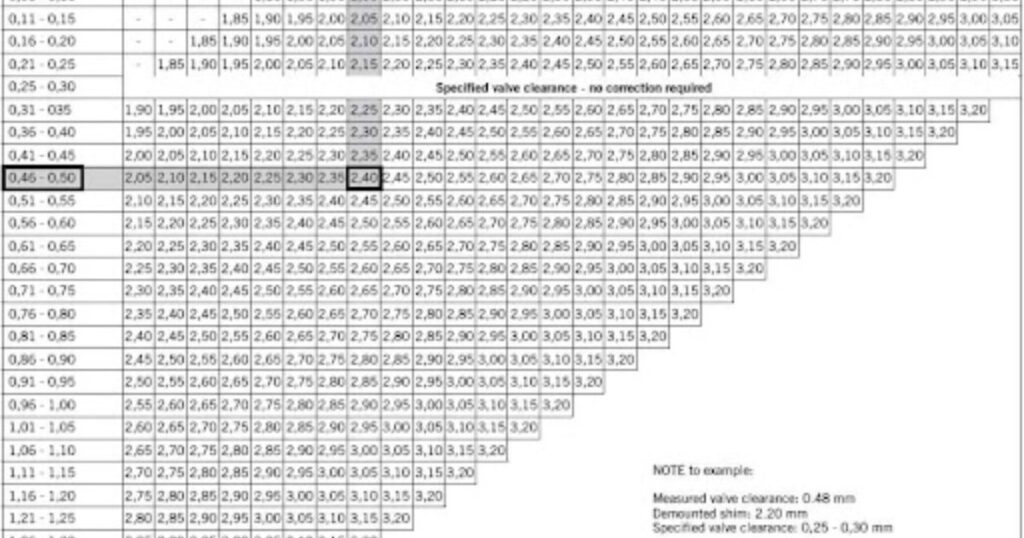Converting inch pounds to foot pounds is a crucial task in various engineering and mechanical applications where torque measurements are involved. Inch pounds (in-lb) and foot pounds (ft-lb) are both units used to measure torque, but they represent different magnitudes. An inch pound is defined as the amount of force exerted when one pound-force is applied at a perpendicular distance of one inch from a pivot point, while a foot pound is the force exerted when one pound-force is applied at a distance of one foot.
This conversion is essential for ensuring accurate torque specifications in fields such as automotive engineering, construction and machinery maintenance. Whether it is calculating the torque required to tighten bolts or determining the power output of an engine, converting inch pounds to foot pounds provides the necessary precision for safe and efficient operation of mechanical systems.
Inch Pounds to Foot Pounds Conversion
Converting inch pounds to foot pounds is a straightforward process essential in various mechanical and engineering contexts. Torque, measured in inch pounds (in-lb) or foot pounds (ft-lb), represents rotational force applied to objects such as bolts, screws or machinery components.
The conversion from inch pounds to foot pounds involves dividing the value in inch pounds by 12, as there are 12 inches in a foot. For example, 24 inch pounds would equal 2 foot pounds (24 in-lb / 12 = 2 ft-lb). This conversion is vital for ensuring accurate torque specifications and proper functioning of mechanical systems across industries like automotive, aerospace and construction.
Similar Converters
Here are some similar converters you might find useful:
You Might Want To Check: What is Ml in Ounces Converter
- Lbs to Newtons: Convert pounds to newtons, useful for force conversions in various engineering applications.
- Volts to Joules: Convert voltage measurements to joules, helpful for understanding energy transfer in electrical systems.
- Volts to Kilovolts: Convert voltage measurements to kilovolts, useful for scaling up electrical measurements.
- Watts to dBm: Convert power measurements from watts to dBm, commonly used in telecommunications and signal processing.
- BTU to Joules: Convert British Thermal Units (BTU) to joules, important for understanding energy content in heating and cooling systems.
- Kilocalories to Joules: Convert kilocalories to joules, helpful for understanding energy content in food and nutrition.
- Amps to Volts: Convert amperage to voltage, essential for understanding electrical circuits and power distribution.
- kWh to Joules: Convert kilowatt-hours to joules, useful for energy consumption calculations in utilities and households.
- Kcal to Kj: Convert kilocalories to kilojoules, important for dietary energy intake calculations.
- kVA to kW: Convert apparent power (kVA) to real power (kW), crucial for understanding power factor in electrical systems.
These converters cover a range of units and measurements commonly encountered in engineering, physics and everyday life, providing efficient tools for conversions and calculations.
You May Also Like: Floryvulyura 24H: A Day Among Eternal Blossoms
Inch Pounds to Foot Pounds Conversion Table
| Inch Pounds (in-lb) | Foot Pounds (ft-lb) |
| 18 inch pounds to foot pounds = 1.5 | 140 inch pounds to foot pounds = 11.67 |
| 20 inch pounds to foot pounds = 1.67 | 150 inch pounds to foot pounds = 12.5 |
| 40 inch pounds to foot pounds = 3.33 | 177 inch pounds to foot pounds = 14.75 |
| 44 inch pounds to foot pounds = 3.67 | 180 inch pounds to foot pounds = 15 |
| 44 inch pounds to foot pounds = 3.67 | 180 inch pounds to foot pounds = 15 |
| 50 inch pounds to foot pounds = 4.17 | 200 inch pounds to foot pounds = 16.67 |
| 60 inch pounds to foot pounds = 5 | 220 inch pounds to foot pounds = 18.33 |
| 65 inch pounds to foot pounds = 5.42 | 250 inch pounds to foot pounds = 20.83 |
| 70 inch pounds to foot pounds = 5.83 | 275 inch pounds to foot pounds = 22.92 |
| 71 inch pounds to foot pounds = 5.92 | 300 inch pounds to foot pounds = 25 |
| 72 inch pounds to foot pounds = 6 | 400 inch pounds to foot pounds = 33.33 |
| 80 inch pounds to foot pounds = 6.67 | 500 inch pounds to foot pounds = 41.67 |
| 89 inch pounds to foot pounds = 7.42 | 1000 inch pounds to foot pounds = 83.33 |
| 90 inch pounds to foot pounds = 7.5 | 1200 inch pounds to foot pounds = 100 |
| 105 inch pounds to foot pounds = 8.75 | 1400 inch pounds to foot pounds = 116.67 |
| 106 inch pounds to foot pounds = 8.83 | 1500 inch pounds to foot pounds = 125 |
| 108 inch pounds to foot pounds = 9 | 1600 inch pounds to foot pounds = 133.33 |
| 110 inch pounds to foot pounds = 9.17 | 1700 inch pounds to foot pounds = 141.67 |
| 120 inch pounds to foot pounds = 10 | 1800 inch pounds to foot pounds = 150 |
| 133 inch pounds to foot pounds = 11.08 | 2000 inch pounds to foot pounds = 166.67 |
Inch-Pounds to Foot-Pounds Conversion
Converting inch-pounds to foot-pounds is a fundamental process in engineering and mechanical applications where torque is a key parameter. Inch-pounds (in-lb) and foot-pounds (ft-lb) are both units used to measure torque, representing the amount of force applied at a certain distance from a pivot point.
The conversion from inch-pounds to foot-pounds is straightforward, requiring the value in inch-pounds to be divided by 12, as there are 12 inches in a foot. For instance, 60 inch-pounds would equal 5 foot-pounds (60 in-lb / 12 = 5 ft-lb). This conversion is crucial for ensuring precise torque specifications and proper functioning of machinery and mechanical systems across various industries.

Frequently Asked Question
How do I perform the conversion from inch pounds to foot pounds?
To convert inch pounds to foot pounds, simply divide the value in inch pounds by 12, as there are 12 inches in a foot. For example, to convert 60 inch pounds to foot pounds, you would divide 60 by 12, resulting in 5 foot pounds.
Why is torque measurement important in engineering and mechanical systems?
Torque measurement is crucial for ensuring proper functioning, safety, and efficiency of machinery and mechanical systems. It helps determine the amount of rotational force applied to components like bolts, screws, and shafts, impacting factors such as performance, stability and reliability.
In what industries or applications is inch pounds to foot pounds conversion commonly used?
Inch pounds to foot pounds conversion finds application in various industries such as automotive, aerospace, manufacturing, construction, and machinery maintenance. It is particularly vital in tasks involving assembly, repair and maintenance of equipment where precise torque specifications are essential.
Are there any standard units for torque measurement other than inch pounds and foot pounds?
Yes, torque can also be measured in other units such as Newton meters (Nm) or ounce inches (oz-in), depending on the context and region. However, inch pounds and foot pounds are widely used in the United States and some other countries for torque measurements.
Conclusion
In conclusion, understanding and implementing inch pounds to foot pounds conversion is integral to numerous mechanical and engineering endeavors. This conversion facilitates clear communication and precise torque specifications in various industries, including automotive, aerospace and construction.
By converting torque measurements from inch pounds to foot pounds, engineers and technicians can ensure the proper functioning, safety and efficiency of machinery and mechanical systems. With accurate torque measurements, potential issues such as over tightening or under tightening of fasteners can be mitigated, leading to enhanced performance and reliability.

Passionate writer exploring trending topics, crafting insightful narratives. Curator of captivating stories, delving deep into current issues. Wordsmith igniting minds, sparking conversations and shaping perspectives.











